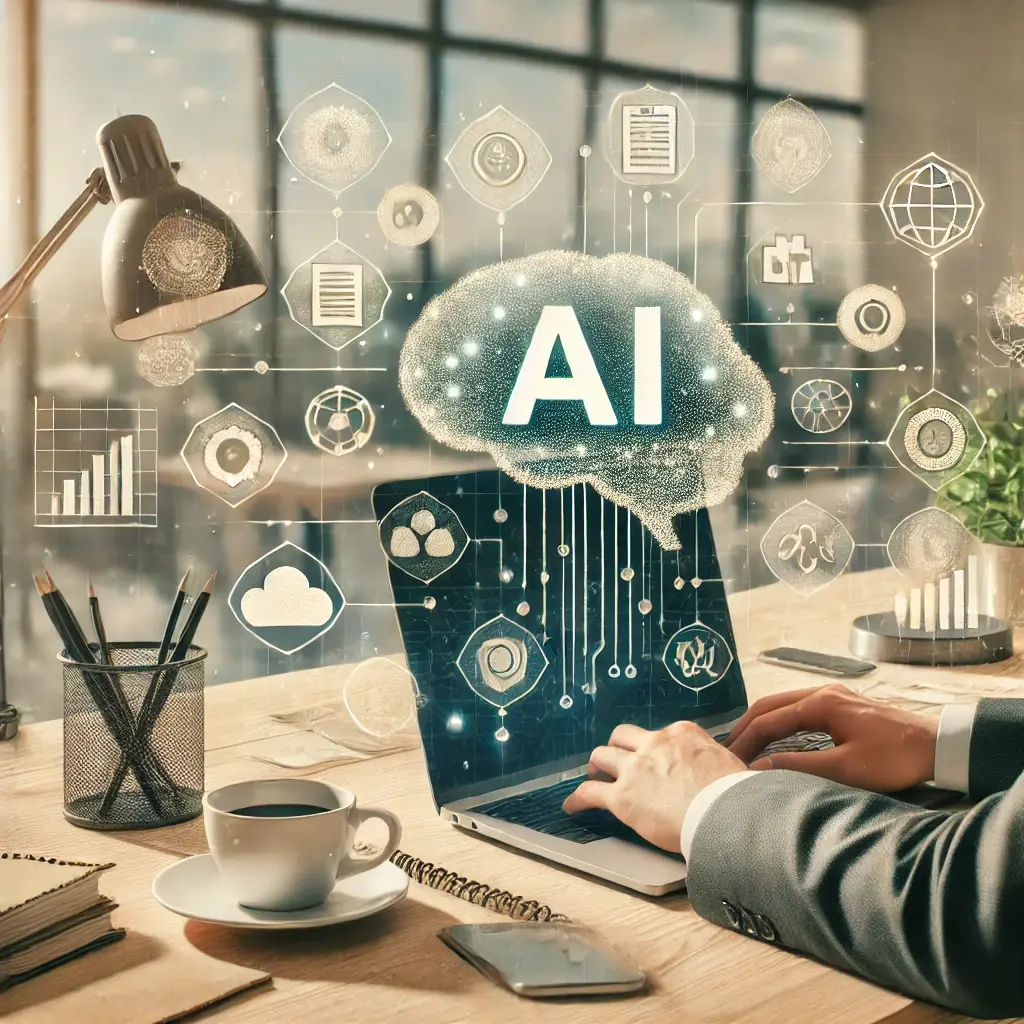E-Commerce 3.0: The New Era of E- Commerce
Navigating the New Era of E-Commerce
The e-commerce landscape has transformed dramatically over the past decade, becoming increasingly complex as digital adoption accelerates worldwide. With this growth, the industry’s dynamics have evolved, demanding businesses to innovate constantly, especially in forging meaningful customer relationships, which have become more critical than ever.
During the COVID-19 pandemic, the rate of digital adoption surged, doubling across the globe. This shift was so significant that some projections suggest online retail could account for half of all retail revenues by next year. However, the rapid expansion into digital spaces brought its own challenges.
Many companies discovered that simply expanding their digital footprint or emphasizing their online presence didn’t necessarily guarantee profitability. As McKinsey highlighted in their analysis of the “eCommerce catch-22,” many retailers who saw significant growth in online sales during 2020 and 2021 also experienced shrinking profit margins.1
It’s clear that AI is now playing a pivotal role in this shift. In fact, a Forbes Advisor survey reveals that 64% of business owners believe AI will not only enhance customer relationships but also boost productivity within their organizations. This dual benefit underscores the growing reliance on AI-driven solutions as businesses seek to thrive in an increasingly competitive e-commerce landscape.2
Amidst this massive shift in consumer behavior, staying competitive means staying ahead of emerging trends. To navigate the complexities of the current market and harness the full potential of digital transformation, businesses must pay attention to the key e-commerce trends that are set to shape the industry’s future.
Here are some of the most significant trends poised to impact the global USD 3.3 trillion market and elevate the digital shopping experience(Hayes).3
Key AI Trends to Watch in Retail and E-Commerce
-
Personalization: AI analyzes customer data to offer personalized product recommendations and tailored shopping experiences across various touchpoints like product pages, emails, and checkout processes.
-
Dynamic Pricing: AI allows real-time price adjustments based on demand, inventory, and competitor pricing, helping businesses optimize revenue while staying competitive.
-
Chatbots and Virtual Assistants: AI-driven chatbots provide personalized, real-time customer support, enhancing the overall shopping experience and streamlining customer service.
-
Search and Discovery: AI improves product search and discovery by better capturing user intent and making searches more relevant, helping customers find exactly what they need.
-
AI-Powered Business Models: AI has enabled the rise of subscription-based e-commerce brands, offering personalized product selections and driving significant growth in this sector.
- AI for Operations: AI optimizes operations through automation and data-driven insights, improving supply chain management, inventory optimization, and demand forecasting. Businesses can use AI to streamline backend processes, leading to better resource allocation, lower costs, and higher productivity.
Use Cases: AI Transforming Retail and E-Commerce
The applications of AI in retail and e-commerce are vast and continually expanding. From product design and content generation to personalized marketing and inventory management, AI’s potential is boundless.
Walmart: Anticipating Your Needs Before You Know Them
Inventory Management and Supply Chain Optimization: Walmart experienced a 10-20% reduction in inventory costs by using AI to predict inventory needs and manage its supply chain more efficiently. By analyzing factors such as seasonal trends, promotional activities, and market conditions, AI ensures retailers maintain optimal stock levels, reducing the risk of overstocking or stockouts. AI can also identify potential supply chain disruptions and suggest alternative strategies to mitigate risks, ultimately helping retailers reduce costs and enhance customer service.4
Search and Discovery: Walmart is leveraging generative AI to simplify the shopping experience for its customers. Through a fine-tuned, open-source model developed in collaboration with OpenAI, Walmart can offer personalized responses and product suggestions tailored to individual customer needs. This technology allows customers to make confident purchase decisions quickly and effortlessly. For example, instead of conducting multiple searches for a party, a customer can now input a single prompt like “Help me plan a football watch party,” and AI will generate a comprehensive list of everything needed, saving time and enhancing the shopping experience.5
Stitch Fix: Using Data to Dress You Better
With a treasure trove of 4.5 billion data points from client interactions, Stitch Fix utilizes generative AI to deliver highly personalized product recommendations. This approach not only tailors shopping experiences more precisely but also enables the creation of 10,000 product descriptions every 30 minutes, boosting efficiency and market growth.6
Need expert support for your AI transition? Book a free consultation with our specialist today and discover how AI can streamline your processes and drive growth for your company.
Staying Ahead in the AI-Driven E-Commerce Landscape
To remain at the forefront of the evolving e-commerce industry, businesses must continue to innovate and leverage AI to enhance customer experiences and streamline operations. Here are some tips based on Forbes’ recommendations:7
-
Enhance Personalization: Modern customers expect personalized experiences. According to McKinsey, 71% of consumers want personalized interactions, and 76% get frustrated when this doesn’t happen. Investing in AI-driven personalization can significantly improve customer satisfaction and loyalty.
-
Streamline Operations with AI Insights: AI can optimize backend operations, from cost reductions and better resource allocation to enhanced efficiency and productivity. For example, AI can refine pricing strategies, ensuring businesses remain competitive while maintaining healthy margins.
-
Explore New Business Models with AI: AI innovation can open up new revenue streams. Retail companies can resell AI-generated data, insights, and applications to other businesses or value-chain partners, creating new opportunities for growth.
Conclusion
As AI continues to evolve, its impact on e-commerce and retail will only grow. Businesses that embrace AI-driven strategies and innovations will not only enhance their customer relationships but also streamline operations and discover new growth opportunities. Staying ahead in this rapidly changing landscape requires a commitment to continuous improvement and a willingness to explore the vast potential AI offers.
Ready to transform your customer service with AI? Book a free consultation with Crata AI today and discover how our tailored solutions can enhance your customer experience and boost efficiency. Let's unlock the potential of AI together!
References
[1] Bai, Jiamei, et al. “Solving the Paradox of Growth and Profitability in E-Commerce.” McKinsey & Company, McKinsey & Company, 30 Dec. 2021, www.mckinsey.com/industries/retail/our-insights/solving-the-paradox-of-growth-and-profitability-in-e-commerce.
[2] Haan, Katherine. “How Businesses Are Using Artificial Intelligence in 2024.” Forbes, Forbes Magazine, 25 Mar. 2024, www.forbes.com/advisor/business/software/ai-in-business/.
[3] Hayes, Molly. “6 Ecommerce Trends to Watch.” IBM Blog, 21 May 2024, www.ibm.com/blog/ecommerce-trends/.
[4] “Walmart’s Generative AI Search Puts More Time Back in Customers’ Hands.” Walmart’s Generative AI Search Puts More Time Back in Customers’ Hands, 30 Jan. 2024, tech.walmart.com/content/walmart-global-tech/en_us/blog/post/walmarts-generative-ai-search-puts-more-time-back-in-customers-hands.html.
[5] Nagar , Nishtha. “Generative AI in Retail-Use Cases and Examples.” ProjectPro, 6 Aug. 2024, www.projectpro.io/article/generative-ai-in-retail/1031#:~:text=For%20example%2C%20retailers%20can%20use,customers%2C%20enhancing%20their%20shopping%20experience.
[4] “Walmart’s Generative AI Search Puts More Time Back in Customers’ Hands.” Walmart’s Generative AI Search Puts More Time Back in Customers’ Hands, 30 Jan. 2024, tech.walmart.com/content/walmart-global-tech/en_us/blog/post/walmarts-generative-ai-search-puts-more-time-back-in-customers-hands.html.
[5] Nagar , Nishtha. “Generative AI in Retail-Use Cases and Examples.” ProjectPro, 6 Aug. 2024, www.projectpro.io/article/generative-ai-in-retail/1031#:~:text=For%20example%2C%20retailers%20can%20use,customers%2C%20enhancing%20their%20shopping%20experience.
[6] “How We’re Revolutionizing Personal Styling with Generative AI.” Stitch Fix Newsroom, 29 June 2023, newsroom.stitchfix.com/blog/how-were-revolutionizing-personal-styling-with-generative-ai/.
[7] Power, Rhett. “3 Ways AI Is Shaking up the E-Commerce Space.” Forbes, Forbes Magazine, 9 May 2024, www.forbes.com/sites/rhettpower/2023/12/10/3-ways-ai-is-shaking-up-the-e-commerce-space/.
 By
By



